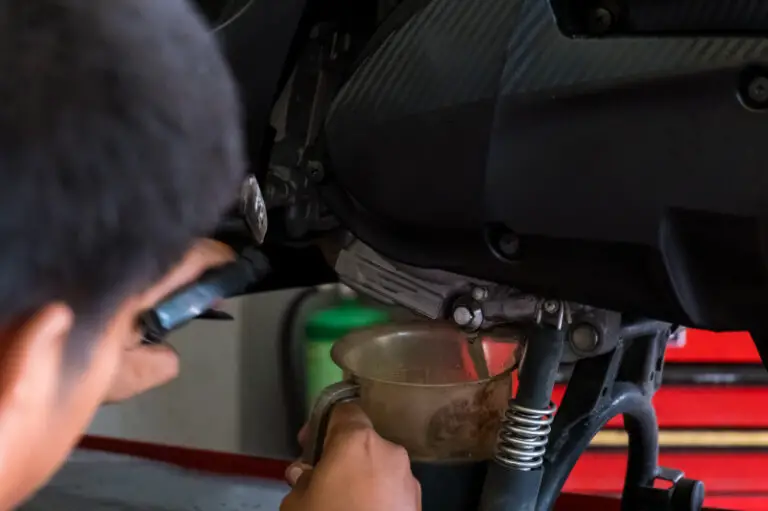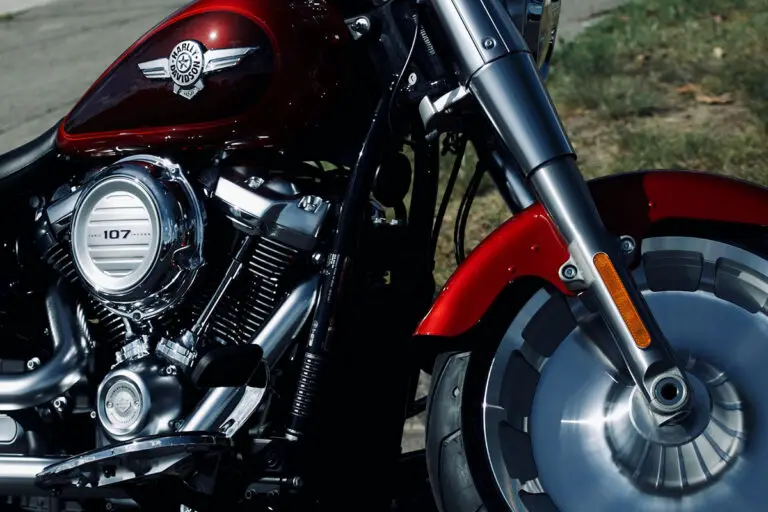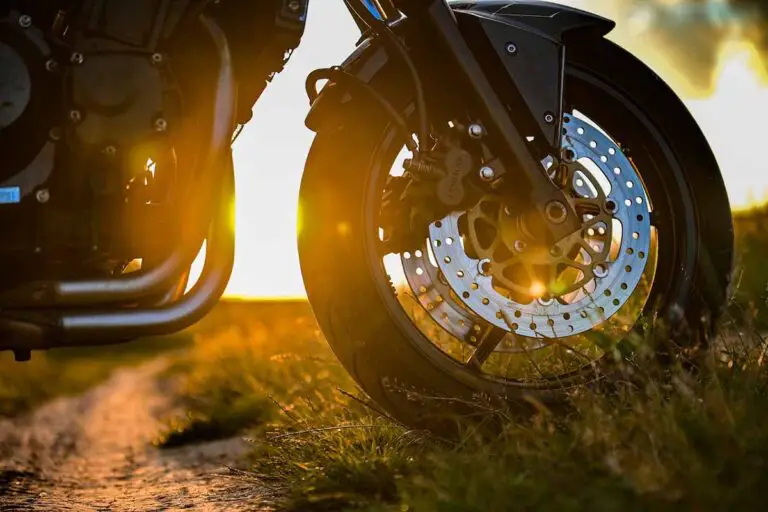How to Store a Motorcycle Outside (8 Tips)
Disclosure: We may get commissions for purchases made through links in this post.
Nothing ruins a motorhead’s optimism for spring more than a problematic (or worse, seized up) two-wheeler. And sadly, this occurrence often traces back to poor preparation of a motorcycle for prolonged storage.
Many of us, at one point, have been guilty of this misdeed. We will not have to commit the same mistake twice if we brush up on our knowledge of the process.
If you are wondering how to store a motorcycle outside or for winter, the answer is relatively simple. Tidy up the bike inside and out, replenish all fuel and fluids with fresh ones, lube all moving parts, give the exterior protective coating, and stash the bike away in a clean, dry place.
Below are eight steps on how to store a motorcycle for winter (or outside a garage):
- Give the battery some TLC.
- Take care of the fuel system.
- Preserve your cylinders.
- Top off with fresh fluids after flushing old ones out.
- Remove tires or inflate them to spec.
- Cleanse, wipe dry, and wax.
- Cover up.
- Store the bike in a well-ventilated, contaminant-free area.
If you plan to ride long into winter before surrendering your two-wheeler to its yearly hibernation, you may not necessarily have to deal with all the steps above. But if you are looking at three to four months of inactivity for your motorcycle, I highly recommend that you read on and get the most out of this article.
Tips on How to Store a Motorcycle
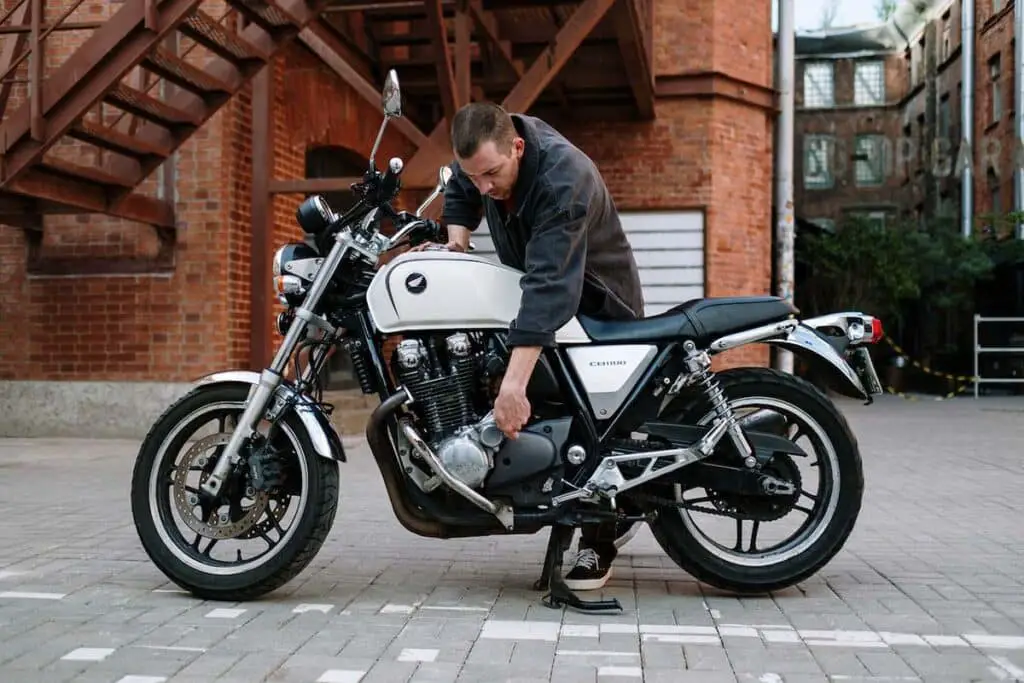
1. Give the Battery Some TLC.
Batteries may not be the first thing that comes to mind when you think of how to store a motorcycle outside. But I put them first on this list since they tend to be the most overlooked. Just observe the number of motorcycle batteries sold or replaced over the parts counter every spring!
Thankfully, battery maintainers nowadays are affordable. There are pricier options like the Schumacher DSR125 DSR ProSeries Automatic Smart Battery Charger/Maintainer (view on Amazon). But they can be used on different modes of transportation and will last you a lifetime.
Whichever you currently have or decide to get, the important thing is not to let your battery roll over and die during storage. Not only will doing so be impractical and cause additional expense, but it will also kill your desire for a weekend out with friends come riding season.
Battery Maintenance
To properly care for your battery, first store the bike in a warm area (when possible). Next, connect a battery maintainer or tender to it to allow your battery to stay charged and cycle. Removing the battery from the bike is not always necessary unless you are storing your two-wheeler outside and the ambient temperature is freezing.
Another situation requiring battery removal from the motorcycle is if the latter has some feature (for instance, audio-system memory) that causes a constant drain on the battery.
For maintenance-free batteries, you would not need a battery maintainer. Instead, clean the terminals and rid the battery and battery box of dirt or grime. Spray a protective solution or silicone spray on the terminals and connecting hardware. And refill the battery with required fluids (when applicable) before storage.
Exercise extra caution, especially when handling lead-acid batteries. Never leave them out in the cold as their case may crack, causing acid to spill on motorcycle components and rendering them useless.
Note: If you remove the battery from the motorcycle, connect it to a trickle charger. For an alternative way to take care of your battery, insert a pigtail. If your battery dies while stored (or during the winter), attempting to resurrect the poor thing by charging it would be futile – it is already beyond the point of being salvaged.
2. Take Care of the Fuel System.
Your bike’s fuel system, whether carbureted or EFI-enabled, should be protected from moisture buildup and rust during long storage periods. And you have two ways of doing it – by draining your fuel system dry, filling it up to the brim, or coating the inside of the tank with heavy oil. Choosing any of the three is entirely up to you, although a full tank is better than an empty one.
Contrary to what some may think, an empty tank does not stay completely dry during extended storage. Despite the absence of tank damage or a loose gas cap, condensation will still occur because it is filled and tightly closed. Draining the tank (or running the engine until starved for fuel) is part of taking care of your fuel system, but it does not stop there.
To combat condensation, you will need to drain the tank (along with the carburetor float bowls) to rid it of old fuel, water, and other contaminants, fill it with petrol or diesel, and add fuel stabilizer. Once done, run the motorcycle for a few minutes to allow the stabilizer to circulate throughout the fuel system, then shut it off.
If you have no spare fuel in your garage and need to have your tank filled at a pump station, putting the fuel stabilizer inside the tank before topping off with fresh fuel is alright. According to Motorcycle Cruiser, “the turbulence of the incoming fuel and the ride home will help mix it.”
3. Preserve the Cylinders.
The third option – coating the inside of the tank with about a tablespoon of heavy oil – is best done if storing a full tank of fuel during winter is not feasible. Compared to the other two, this method cannot be done only once. After initially doing the steps below before your motorcycle storage, you will need to repeat the entire process every few weeks:
- Before storing your motorcycle, turn the petcock off.
- Open the tank and pour ample heavy oil (either pure 50-weight+ or thinned with a small amount of fuel).
- Slosh it around so that the substance coats all interior surfaces. Do this by putting your motorcycle engine in gear with the spark plugs out and the ignition turned off. After which, turn the rear wheel a few times to spread oil over the cylinder walls.
- Turn the petcock on and drain excess oil.
- Turn it off.
Note: Less popular but equally effective options include using fogging oil and storage plugs. Spraying fogging oil into the intake (with the engine running) or spark plug holes will coat the cylinder and valves. Meanwhile, replacing spark plugs with desiccant-containing storage plugs will help absorb moisture and prevent corrosion.
4. Top Off With Fresh Fluids After Flushing Old Ones Out.

Another must-do is to store your motorcycle with fresh fluids. Ideally, you would need to change everything. But if you do not want unnecessary wastage, opt for fresh fluids contingent to the last time you changed them. For instance, if it has not been more than two weeks and a few hundred miles after a brake fluid change, you can exclude the latter from your “change fluid” list.
Unopened fluids have a shelf life of up to five years. But it is a different story for oil left sitting inside a bike. When unused, oils degenerate from heat, get contaminated, or oxidize. Any (or all) can happen if storing your motorcycle for a good number of months. And when they do, carbon deposits and a bunch of other junk develop in your engine, potentially etching metal parts of the mill and rendering your two-wheeler inoperable come spring season.
On the subject of fluids, I highly recommend bleeding the reservoirs before topping them off. This way, you can ensure no old, nasty fluid will contaminate the new fluids you will be putting in the motorcycle.
Also, ascertain that you are using the correct coolant – this is extremely important for winter storage. The appropriate coolant prevents the radiator from busting during storage and spraying corrosive material all over your ride.
Lastly, remove spark plugs and spray the inside of cylinder walls with oil when storing your motorcycle for more than four months. Bumping the ignition while at it helps spread oil on the cylinder walls.
5. Remove Tires or Inflate Them to Spec.
Online publications are torn between these two options. Meanwhile, motorcycle savants mostly prefer to separate the tires from their bikes when storing them. The main reason behind this preference is simple – flat spots.
Taking both tires off is not always possible since not all motorcycles have center stands – unless you have a Venom Motorcycle Front Rear Combo Stand Lift (view on Amazon) or something similar that does the purpose. That said, overinflating the tires a bit and keeping them attached to the bike will prevent those knobbies from developing flat spots.
Additionally, you will have to move the bike a bit now and then and rotate the wheels every month so the motorcycle’s weight is not always sitting on the same part of the tires.
Now for bikes with center stands, the only other thing to remember after removing the tires and getting their cold-tire pressure up to spec is to store them on their side lying down (never in a standing/upright position).
6. Cleanse, Wipe Dry, and Wax.
Never store a dirty bike if you want to safeguard the integrity of your motorcycle and its parts, as filth contains several things harmful to your two-wheeler.
- It holds moisture that causes corrosion and mold (eventually damaging metal and body paint).
- It carries road salt, which is equally bad news.
- Small particles in it can find their way into the inner workings of your motorcycle and create a blockage.
There is no cookie-cutter approach to doing this step, although it makes sense to start with the dirtiest parts or the motorcycle first – like the chain. Experienced owners take their bikes for a 5-mile ride (or so) to get the chain toasty before lubing or waxing. Then, they use a grunge brush and a compatible degreaser for the chain. (Note: A warm chain allows the lube to dissolve quicker after application and enter the O-ring chain for proper lubrication)
Once done, you can go to cleaner portions of your bike until everything is spic and span.
Cleaning Tips
Depending on how grubby your motorcycle is, you may have to wash it entirely. Make sure every nook and cranny is bone-dry (waxed or coated) before storing. You may also opt for an all-weather cover to protect your ride (one of the best ways to store a motorcycle without a garage). However, do the following measures first:
- Use disc cleaner for the brakes
- Glaze fasteners and other small pieces with Vaseline
- Coat metal parts with a corrosion protectant
- Poke your exhaust’s weep hole to ensure no water is trapped inside the muffler.
- Spray your exhaust pipes with WD-40, LPS3, or any similar product
- Wrap the tailpipe end with a plastic bag (no cling wraps, please) or use exhaust plugs to keep vermin out
- Treat your saddle before storage, or bring it inside the home to keep it fresh
- (Optional) use condoms to cover straight pipes
- Wipe off any excess wax or lubricant
- No need to buff the wax until spring
7. Cover Up.
Whether you are storing your motorcycle inside or outside the garage during winter, or any other season, covering it is still highly recommended. Why? Well, the right type of motorcycle cover will protect your two-wheeler from the elements and abrasive dirt and debris. Remember never to use plastic and opt for a breathable, all-weather cover.
Suppose the answer to the question, “Can you store a motorcycle outside?” is more of a circumstance than a choice. In that case, you will be better off renting purpose-built storage systems replete with a heating system and an electric humidifier (especially during winter). Doing so will help keep your motorcycle safe from the elements and the prying eyes of onlookers.
Outside of winter, you may settle for a good-quality motorcycle cover and lock. Preferably, go for a waterproof cover with straps that securely fasten onto the motorcycle.
8. Store the Bike in a Well-Ventilated, Contaminant-Free Area
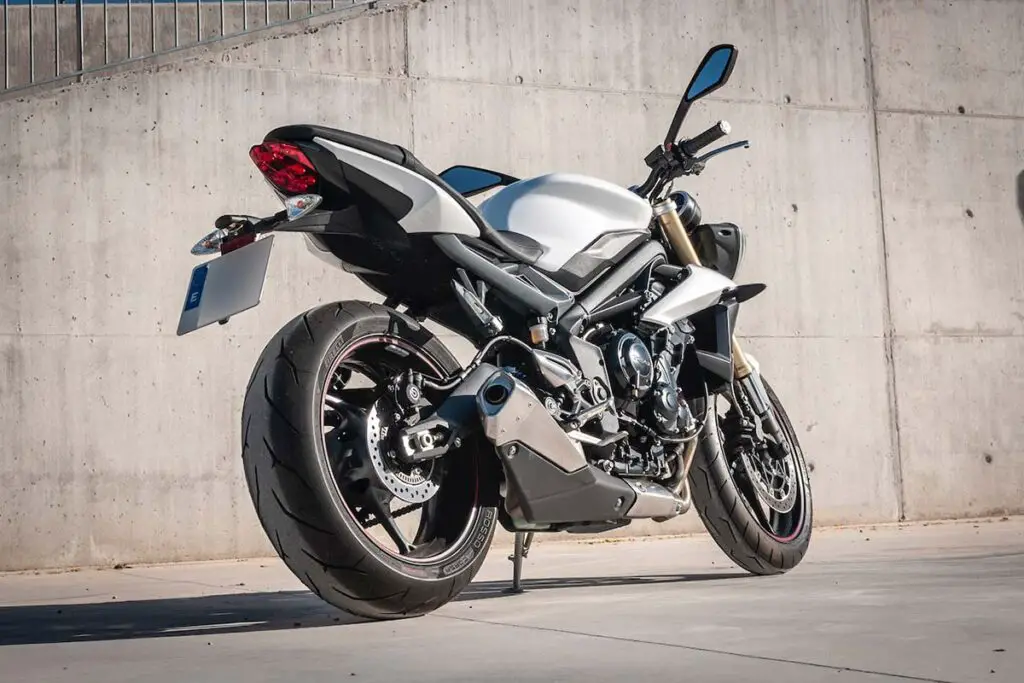
An ideal scenario is to have your beloved two-wheeler inside the comfort of your home. But let us face it – even without a family or significant other, some of us may not have the capability (or space) to make this happen.
So the next best thing to do (and the last on this list) is to put the bike away where there are no chemicals or open fertilizers, and the air circulates – this would be your garage or rented storage space.
In choosing rented spaces, opt for a place not exposed to road salting, snow plowing, or winter traffic. Stay away from those near trash bins, as these locations increase the likelihood of your inactive motorcycle being the next headquarters for rodents.
And if your storage space has a cement floor, place cardboard between your motorcycle and the floor to keep moisture away and your ride safe from corrosion.
Conclusion – How to Store a Motorcycle Outside
To recap, here are the eight steps on how to store a motorcycle for winter (also applies to other seasons):
- Give the battery some TLC.
- Take care of the fuel system.
- Preserve your cylinders.
- Top off with fresh fluids after flushing old ones out.
- Remove tires or inflate them to spec.
- Cleanse, wipe dry, and wax.
- Cover up.
- Store the bike in a well-ventilated, contaminant-free area.
This 8-step process may seem like a ton of things to do. But when done correctly, it will be well worth it. After all, nothing is more exciting than welcoming a fully-functioning motorcycle fresh from hibernation come riding season.
So, enjoy your adventure and commute buddy while you still can. Because as soon as winter hits, it will be a while before you can put your legs over your beloved two-wheeler.


